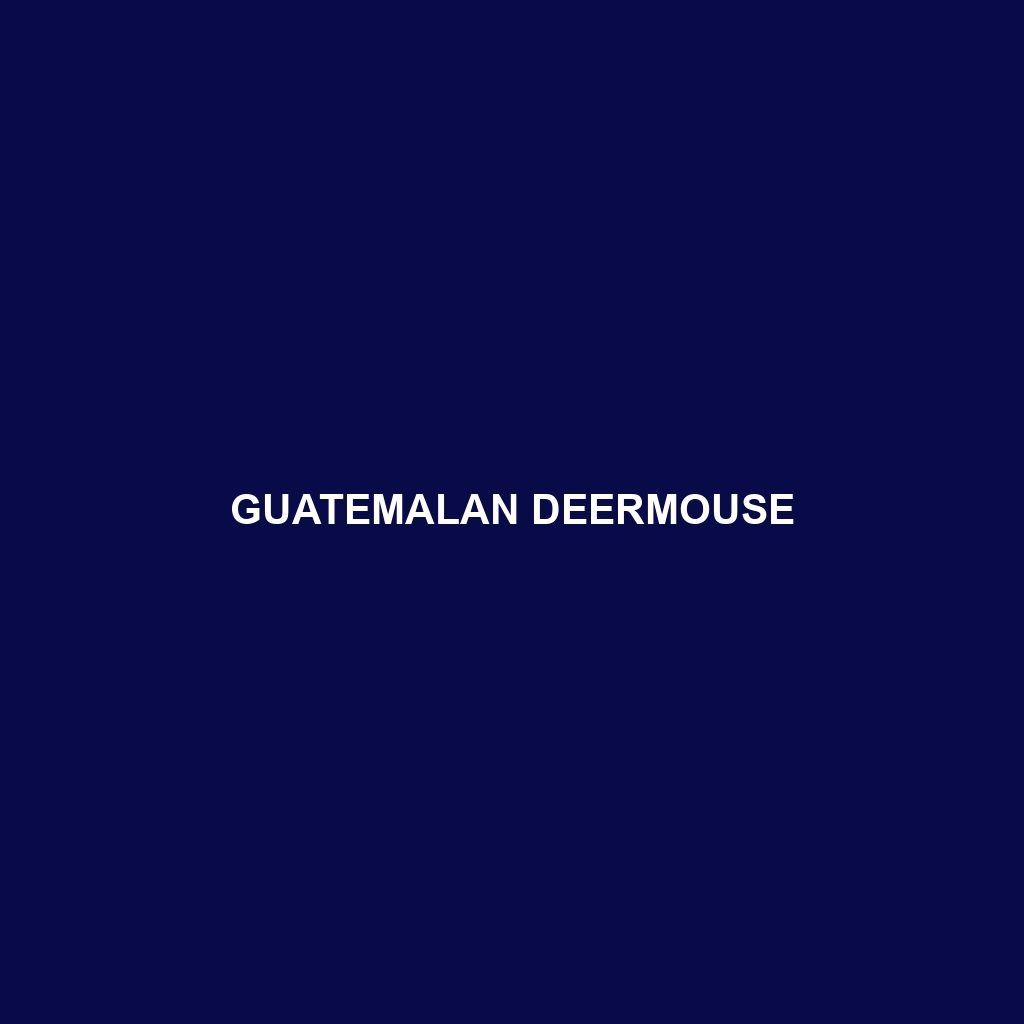Guatemalan Deermouse Species Description
Common Name: Guatemalan Deermouse
Scientific Name: Peromyscus guatemalensis
Habitat
The Guatemalan Deermouse is primarily found in the lush, tropical forests of Central America, specifically in Guatemala and parts of southern Mexico. This species typically thrives in humid environments with dense vegetation, including montane forests, lowland forests, and areas near rivers and streams. The preference for moist habitats aids their survival, as they are highly adapted to the climate conditions prevalent in these regions.
Physical Characteristics
Guatemalan Deermice are medium-sized rodents, typically measuring between 8 to 10 inches in length, including their long tails which add an additional 4 to 5 inches. Their fur is generally soft and varies in color from light brown to grayish, with white underbellies. Notable distinctive features include large, rounded ears and a pointed snout. These physical traits not only contribute to their appeal but also assist in identifying them in the wild.
Behavior
This species is primarily nocturnal, exhibiting peak activity during the night when it forages for food and interacts with other individuals. Guatemalan Deermice are known for their agility and tree-climbing skills, which are vital for escaping predators. They also communicate through a variety of vocalizations, especially during mating seasons, and display territorial behaviors to establish dominance over their habitats.
Diet
Guatemalan Deermice are omnivorous, feeding primarily on seeds, fruits, nuts, and insects. Their diet is crucial for seed dispersal within their forest habitats, and they exhibit foraging behaviors that showcase their adaptability to different food sources. This species plays an essential role in maintaining plant diversity through its feeding habits.
Reproduction
The breeding season for Guatemalan Deermice varies with the seasonality of their habitat, often occurring from late spring through early fall. Females typically give birth to 3 to 6 offspring after a gestation period of about 25 days. The young are altricial at birth and rely heavily on their mothers for nutrition and warmth until they reach maturity. Notably, females may breed multiple times during the breeding season, which contributes to population stability.
Conservation Status
The Guatemalan Deermouse is currently listed as a species of Least Concern according to the IUCN Red List; however, habitat loss due to agricultural expansion and deforestation poses potential threats to their populations. Conservation efforts are essential to ensuring the stability of their natural habitats and to monitor any impacts on their numbers.
Interesting Facts
One fascinating fact about the Guatemalan Deermouse is its exceptional climbing abilities, which allow it to navigate through the tree canopy effectively. Additionally, these rodents have been known to exhibit playful behaviors, particularly among young individuals, enhancing social bonds within their groups.
Role in Ecosystem
The Guatemalan Deermouse plays a vital role in its ecosystem, acting as both prey and seed disperser. As a primary food source for various predators, including birds of prey and snakes, their populations significantly contribute to food webs. Furthermore, their foraging activities promote plant growth and diversity, thus maintaining the health of their forest habitats.
